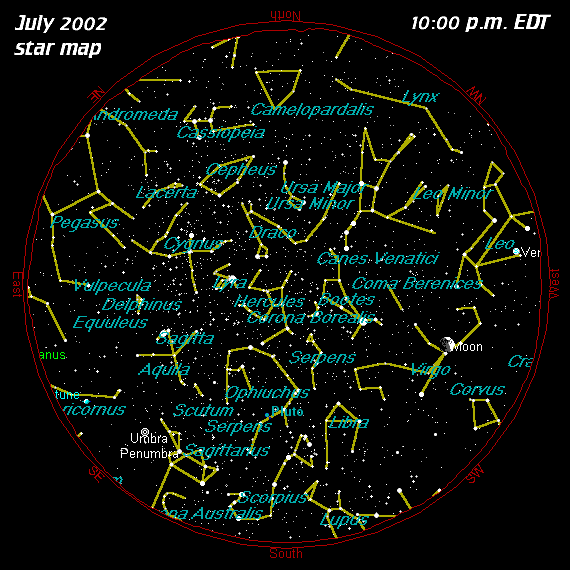



![[Moon Phases]](../moonphases/2002-07-phases.jpg) |
|---|
![[Journing Moon 1]](7-02-journeying-moon1.gif) |
|---|
| Journeying Moon: The moon is visible in the east in the morning sky near Aldebaran and Saturn during the beginning of this week and in the west after sunset near Venus by the end of the week. Graphics by Gary A. Becker... |
![[Journing Moon 2]](7-02-journeying-moon2.gif) |
|---|
| Journeying Moon: The first quarter moon passes blue Spica on Tuesday and red Antares on Friday. Graphics by Gary A. Becker... |
![[Journing Moon 3]](7-02-journeying-moon3.gif) |
|---|
| Journeying Moon: . The moon passes near to the position of the center of our Milky Way galaxy on Sunday and is full early Wednesday morning. Graphics by Gary A. Becker... |
![[Journing Moon 4]](7-02-journeying-moon4.gif) |
|---|
| Journeying Moon: The moon's terminator lines up with Hamal on Thursday and passes between the Pleiades star cluster and the star Aldebaran by Saturday. Graphics by Gary A. Becker... |
 |
